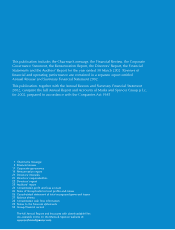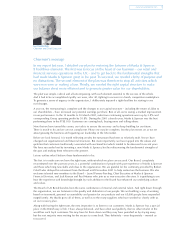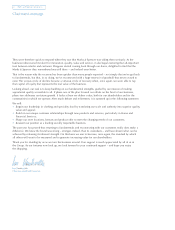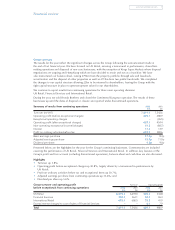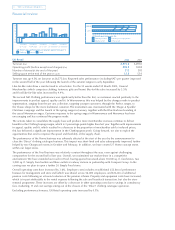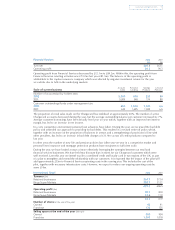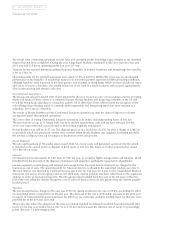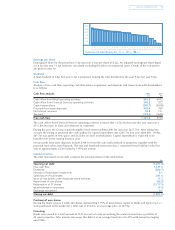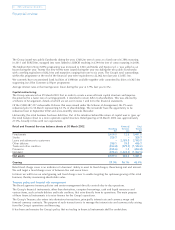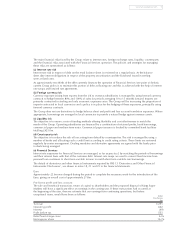Marks and Spencer 2002 Annual Report Download - page 11
Download and view the complete annual report
Please find page 11 of the 2002 Marks and Spencer annual report below. You can navigate through the pages in the report by either clicking on the pages listed below, or by using the keyword search tool below to find specific information within the annual report.
The main financial risks faced by the Group relate to interest rates, foreign exchange rates, liquidity, counterparty
and the financial risks associated with the Financial Services operation. The policies and strategies for managing
these risks are summarised as follows:
(a) Interest rate risk
Interest rate risk in respect of debt on the retail balance sheet is reviewed on a regular basis. At the balance
sheet date interest obligations in respect of the property securitisation and the Eurobond issued in sterling
were at fixed rates.
As approximately two thirds of the debt currently finances the operation of Financial Services (see point (e) below),
current Group policy is to maintain this portion of debt as floating rate and this is achieved with the help of interest
rate swaps and forward rate agreements.
(b) Foreign currency risk
Currency exposure arising from exports from the UK to overseas subsidiaries is managed by using forward currency
contracts to hedge between 80% and 100% of sales for periods averaging 10 to 15 months forward. Imports are
primarily contracted in sterling and only economic exposures arise. The Group will be increasing the proportion of
imports contracted in local currencies and a policy is in place for the hedging of these exposures, principally using
forward currency contracts.
The Group does not use derivatives to hedge balance sheet and profit and loss account translation exposures. Where
appropriate, borrowings are arranged in local currencies to provide a natural hedge against overseas assets.
(c) Liquidity risk
The objective is to ensure a mix of funding methods offering flexibility and cost effectiveness to match the
needs of the Group. Operating subsidiaries are financed by a combination of retained profits, bank borrowings,
commercial paper and medium term notes. Commercial paper issuance is backed by committed bank facilities
totalling £425.0m.
(d) Counterparty risk
The objective is to reduce the risk of loss arising from default by counterparties. The risk is managed by using a
number of banks and allocating each a credit limit according to credit rating criteria. These limits are reviewed
regularly by senior management. Dealing mandates and derivative agreements are agreed with the banks prior
to deals being arranged.
(e) Financial Services
Interest rate exposures for Financial Services are managed, as far as practical, by matching the periods of borrowings
and their interest basis with that of the customer debt. Interest rate swaps are used to convert fixed income from
personal loan customers to short-term variable income to match short-term variable rate borrowings.
The details of derivatives and other financial instruments required by FRS 13 ‘Derivatives and Other Financial
Instruments: Disclosures’, are shown in notes 18, 21 and 23 to the financial statements.
Euro
Approximately £2.6m was charged during the period to complete the necessary work for the introduction of the
Euro, giving an overall cost of approximately £7.8m.
Pro-forma profit and loss account
The sale and leaseback transaction, return of capital to shareholders and the proposed disposal of Kings Super
Markets will have a significant effect on earnings in the coming year. If these transactions had occurred at
the beginning of the year, then we estimate that our earnings from continuing operations, but before
exceptional items, would have been as follows: 2002
Pro-forma
£m
Turnover 7,291
Operating profit 602
Interest (49)
Profit before tax 553
Retail fixed charge cover 6.0x
Earnings per share 16.7p
www.marksandspencer.com 9


